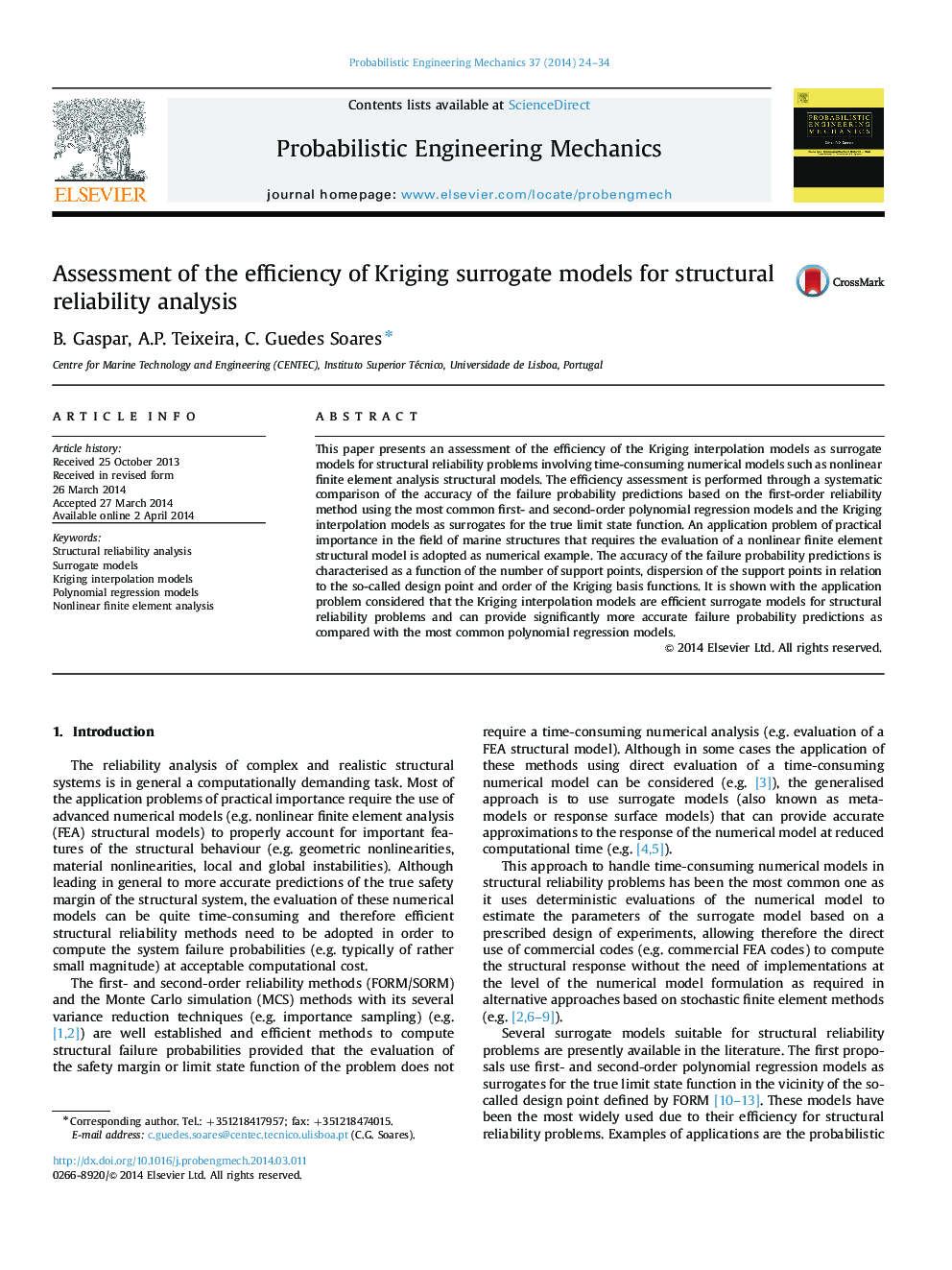| Article ID | Journal | Published Year | Pages | File Type |
|---|---|---|---|---|
| 802151 | Probabilistic Engineering Mechanics | 2014 | 11 Pages |
•Efficiency of Kriging models as surrogates for structural reliability analysis is assessed.•Comparison of Kriging with polynomial regression models in terms of accuracy is presented.•Effect of the number and location of support points and the basis functions order is considered.•Implicit limit state described by a finite element model adopted as numerical example.•Kriging models provide gains of accuracy and efficiency for structural reliability analysis.
This paper presents an assessment of the efficiency of the Kriging interpolation models as surrogate models for structural reliability problems involving time-consuming numerical models such as nonlinear finite element analysis structural models. The efficiency assessment is performed through a systematic comparison of the accuracy of the failure probability predictions based on the first-order reliability method using the most common first- and second-order polynomial regression models and the Kriging interpolation models as surrogates for the true limit state function. An application problem of practical importance in the field of marine structures that requires the evaluation of a nonlinear finite element structural model is adopted as numerical example. The accuracy of the failure probability predictions is characterised as a function of the number of support points, dispersion of the support points in relation to the so-called design point and order of the Kriging basis functions. It is shown with the application problem considered that the Kriging interpolation models are efficient surrogate models for structural reliability problems and can provide significantly more accurate failure probability predictions as compared with the most common polynomial regression models.
